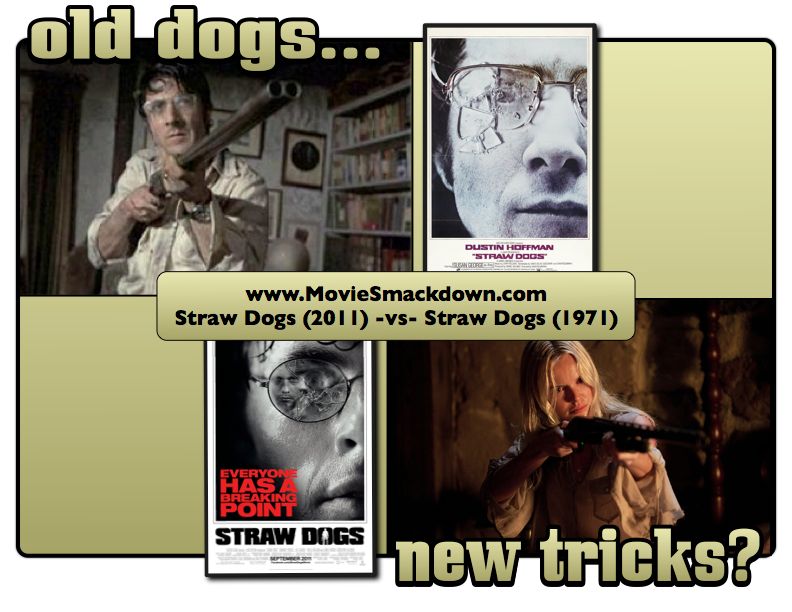
 The Smackdown
The Smackdown
Now, after a summer of sequels that did little to further movie franchises or the film business in general, comes a remake of Straw Dogs, the 1971 classic considered by some critics to be among the most visceral and memorable statements regarding violence ever put on the screen.
Then again, what else would you expect from the maestro of malignant mayhem, the irrepressible Sam Peckinpah?
The updated remake is helmed by journalist/film critic-turned-director Rob Lurie. How does it compare? Can Lurie teach an old Dog new tricks? Like Westminster, this “best in show†is winner take all.
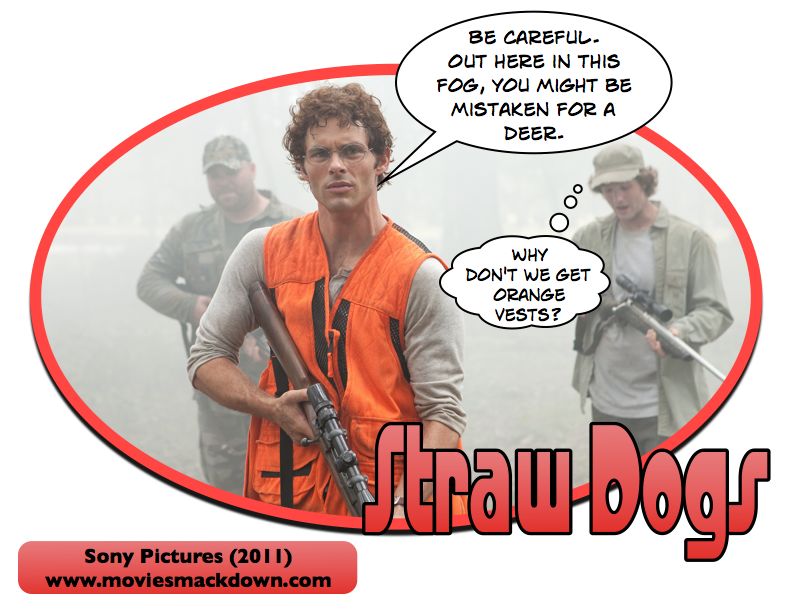
The Challenger
Unlike the original, Lurie’s lurid tale of lust and lawlessness is set in the backwoods far south of the Mason-Dixon line, where David and Amy Sumner (James Marsden and Kate Bosworth) return to her rural hometown to prepare the family home for sale after her father’s death. David is a nebbish Hollywood screenwriter (is there any other kind?), and Amy is his super-sexy actress wife. What they encounter is anything but Southern Comfort. Their marriage is initially tested by tensions which surface almost immediately after they arrive, and far more ominously, their very safety becomes threatened by old conflicts which resurface with the renegade resident rednecks led by Charlie (Alexander Skarsgard), an old flame. Relentless harassment ensues, eventually leading David and Amy from recognition to resignation to resistance to retaliation and ultimately retribution.

The Champion
Peckinpah’s Straw Dogs is set in a rural area of Cornwall, England. The film was highly controversial when it was originally released in 1971, including being banned in that country for its notorious and ambiguous rape scene. Forty years later, this scene continues to elicit widely divergent interpretations. Straw-dogma aside, Peckinpah’s unrestrained level of visceral violence also sparked heated controversy regarding the perceived increase in cinematic savagery at the time. (Keep in mind, The French Connection, Dirty Harry and A Clockwork Orange were also released in 1971.) Dustin Hoffman is cast as David, a passive, introverted mathematician on sabbatical so he can complete his latest book. Susan George plays Amy as a vivacious vixen who is more of a playful tease than a proper housewife. As with our Challenger, Amy and David find themselves barricaded in their rustic farmhouse with desperate determination to keep degenerate goons at bay. Replete with symbolism, sex, intimidation and, of course, violence, there’s no denying this Dog knows how to hunt.
The Scorecard
Peckinpah’s brilliance as a filmmaker can be found in an early scene where Hoffman, the unwitting Yank, manages to commit no less than three egregious social transgressions on his initial visit to the local pub: He orders “any kind of American cigarettes,†he walks between a dart player and his board, and he buys a round of drinks for the house but does not stay to share it with them. Clearly such a clueless cad needs a little comeuppance. Add to the mix Susan George’s protruding nipples and revealing mini-skirt, and there is plenty of fuel to light a fire among the local hooligans’ barely repressed sociopathic impulses. Peckinpah delivers with verve, vision and vitality, beautifully enhanced by the Academy Award-Nominated music score composed by Jerry Fielding that effectively combines jazz minimalism with classic signatures one might expect from a world-class orchestra.
No review of Straw Dogs (at least, the Peckinpah version) is complete without mentioning the ambiguous and disturbing sexual assault of Amy by Charlie (Del Henney). Amy initially puts up a fight, but her struggle seems to lack conviction, and once penetration occurs, she seems to eagerly grind her way into adultery. When one of the other roofers forces Charlie to give way, the sex unquestionably reverts to rape. Some see this scene as a cycle ranging from Amy “asking for it,†to her liking it, to her then being punished for it. There’s no denying this remains, even to this day, one of cinema’s most memorable, controversial and disturbing scenes. Under Lurie’s direction, this seminal (pun intended) scene comes across just as brutal, but does it measure up to the disturbing ambiguity and nuance of its predecessor? More on this later…
Lurie’s remake substitutes Deep South country clodhoppers for English hooligans. Unfortunately, one of these misfits, Bic (played by Drew Powell), looks like Larry the Cable Guy. (Given the setting, wouldn’t Cajuns make for a more interesting menace?) Oh well, as long as they “git er done!†According to Lurie, in an interview featured on this site, this is precisely what he intends to do — tell the same story, but from an opposing point of view, advancing the philosophy that people are conditioned to violence, rather than hard-wired for it. An interesting, even noble experiment, to be sure. And there are lots of exciting beats throughout, thanks to Lurie’s screenplay that is based, virtually scene-by-scene, on the script by David Zelag Goodman and Sam Peckinpah. If nothing else, this sure is a good pedigree.
The Decision
Wikipedia’s List of Cinematic Remakes numbers close to 500 titles, and it is safe to say that most of these are inferior to the originals that spawned them. The relatively few exceptions to this rule all have one thing in common – they bring something new, something relevant or something better to the silver screen. While the basic scenes remain the same, Lurie’s remake fails to ameliorate, much less equal, the original’s uncomfortable, unrelenting primordial and predatory undercurrent. Put another way, the individual scenes add nothing and they subtract nuance, character depth and ambiguity when compared to those directed by Peckinpah. As for the pivotal rape scene, let’s just say it is the cinematic equivalent of sloppy seconds – rapacious but virtually meaningless.
Time will tell whether this new Straw makes hay at the box office. But for the purpose of this Smackdown, the decision is clear cut – Peckinpah’s Straw Dogs (1971) remains Top Dog. There’s a lesson to be learned: Noble intentions notwithstanding, sometimes it is virtually impossible to improve upon the original. I hope Lurie’s remake is the last Straw.

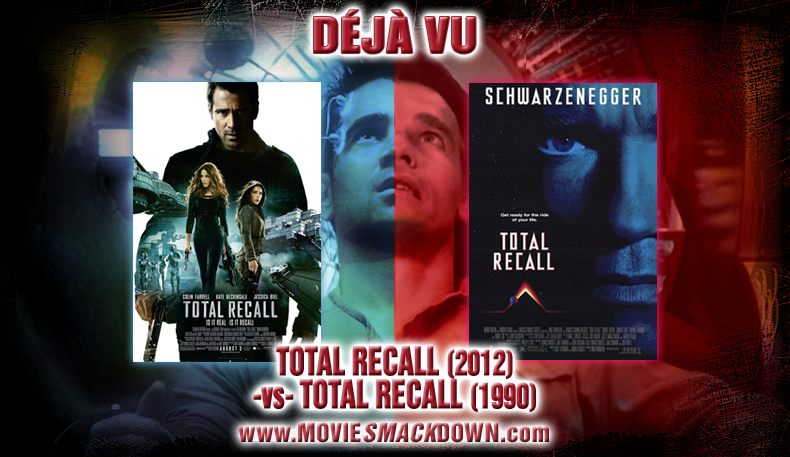
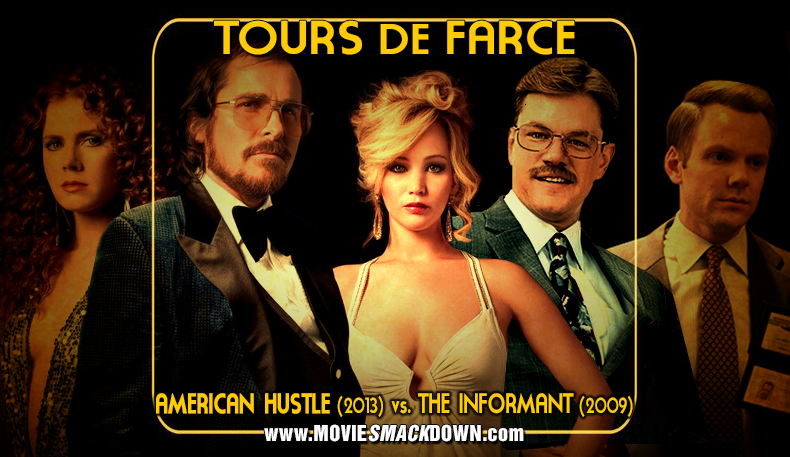
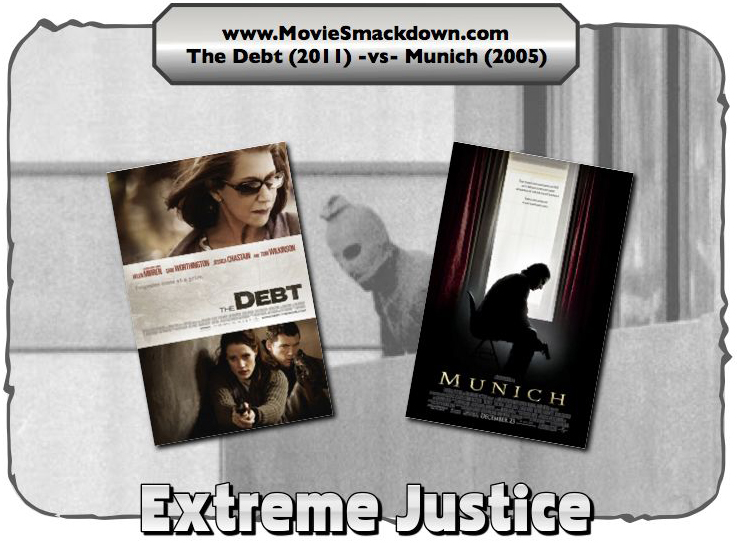
As always, worth the read as the perspective is very enlightening. The original was so out there at the time the controversial is being nice… However, there may be some validity to going to the movies to be embroiled in “real life” versus escape. That being said, you hit the nail in the head (well close anyway) as Mr. Peckinpah’s version used timing classic dramatic effects versus special effects. It certainly was a valiant effort by Lurie but alas it had too many “not quite right” scenes, especially the Cable guy imitator who just plain seemed neurotic and psychotic. Hey, what would I know, I still believe in God, Apple Pie, the American Dream and the basic goodness of man. Thanks Robert for a insightful comparison.
Clyde: I totally agree with your comments — each of the scenes you mention were watered down and had nowhere near the impact inherent in the Peckinpah version. Lurie’s “sloppy seconds” will be soon be forgotten, as will his pretentious, self-absorbed interviews regarding his sociological/psychological “vision” for the film.
You were much kinder to Lurie then I would have been. I really hated the remake for so many reasons that I can’t list here but you’ve hit the mark on the main ones. Lurie also made some other strange choices in many other scenes and the film ends up having little or no impact, because of them. It seemed like when he strayed from the original, it was in some of the most important scenes in the film, as if he didn’t want to invite comparison. The cat scene for instance, shot across the room here instead of in close up. Amy’s rape in the original was filmed from her point of view and it was horrific. And the fact that Lurie dispensed with the marital troubles between Amy and David altogether, immediately lessened the tension by a about half, and left many of the incidents without motivation.
“If a tree falls in a forest and no one is around to hear it, does it make a sound?”
“If a brand new Smackdown is posted right off the bat in fourth place at ‘What’s New @ The Smack,’ does it get read?”
Apparently not…